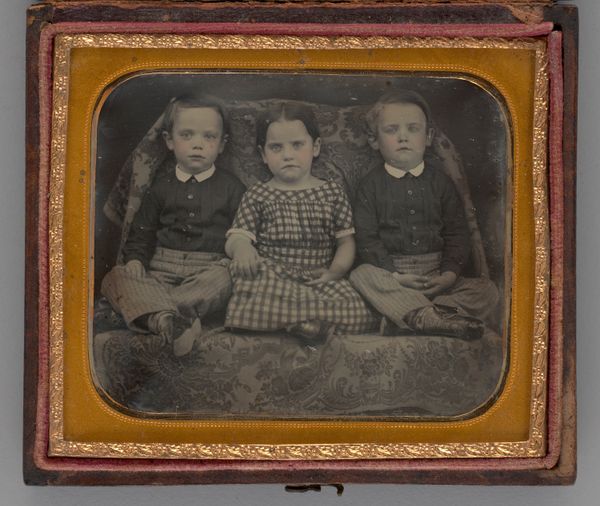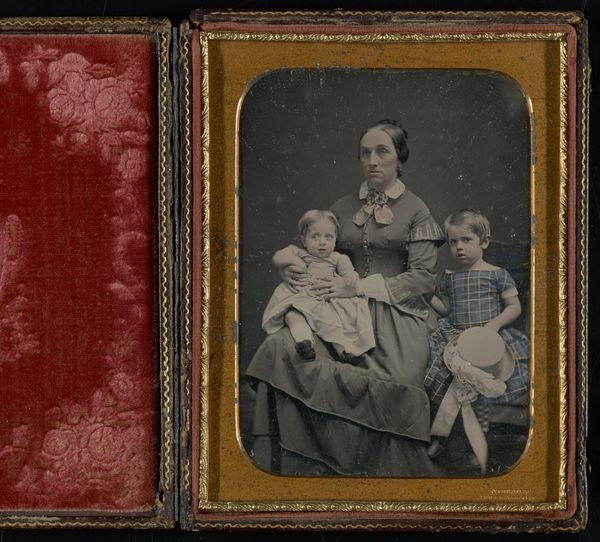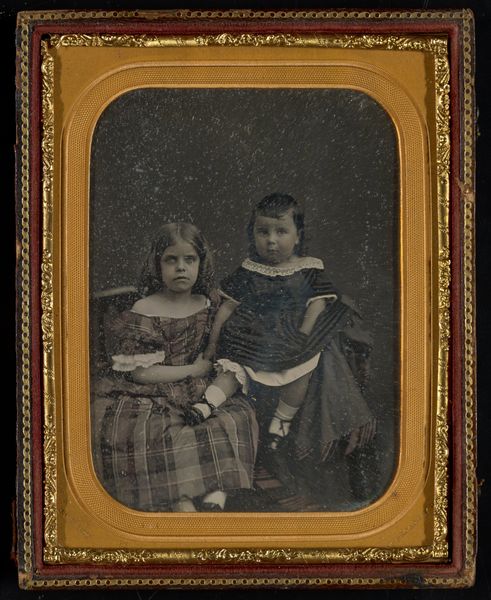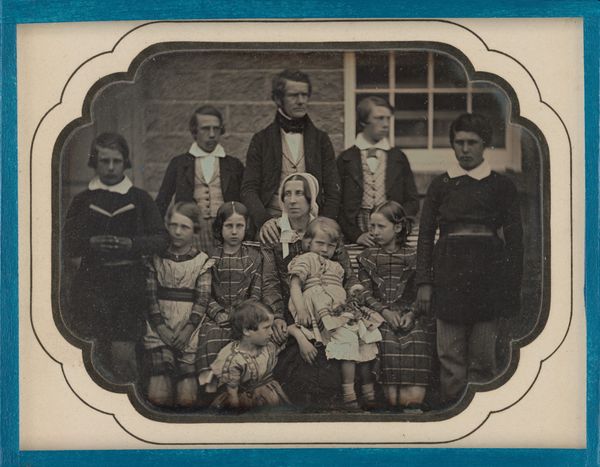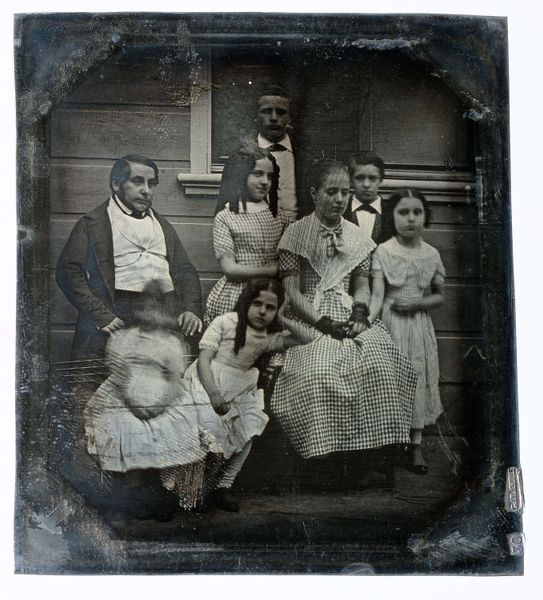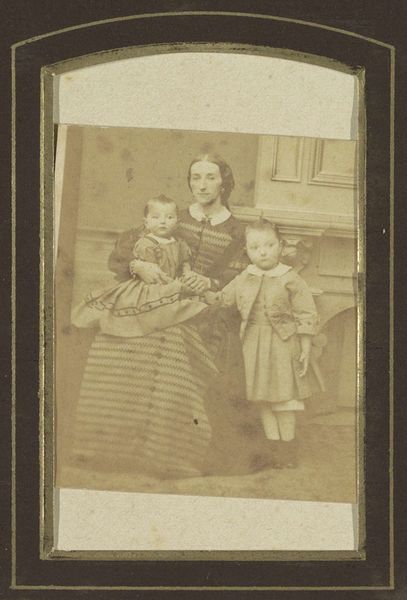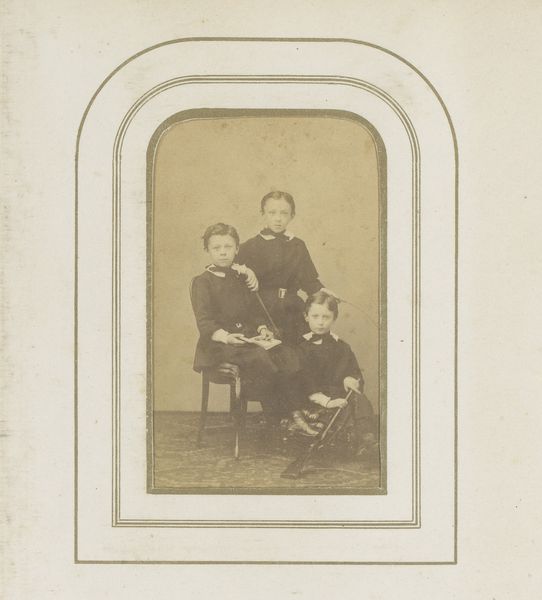![[Woman with Four Children] by Alexandre Bertrand](/_next/image?url=https%3A%2F%2Fd2w8kbdekdi1gv.cloudfront.net%2FeyJidWNrZXQiOiAiYXJ0ZXJhLWltYWdlcy1idWNrZXQiLCAia2V5IjogImFydHdvcmtzLzdmMzBjNDhhLTI5MmMtNDI3Yy1iZThmLTRmZDM1YTE3MTIzNC83ZjMwYzQ4YS0yOTJjLTQyN2MtYmU4Zi00ZmQzNWExNzEyMzRfZnVsbC5qcGciLCAiZWRpdHMiOiB7InJlc2l6ZSI6IHsid2lkdGgiOiAxOTIwLCAiaGVpZ2h0IjogMTkyMCwgImZpdCI6ICJpbnNpZGUifX19&w=3840&q=75)
Dimensions: Image: 14.6 × 11 cm (5 3/4 × 4 5/16 in.) Frame: 37 × 31.5 cm (14 9/16 × 12 3/8 in.)
Copyright: Public Domain
Editor: This is an intriguing daguerreotype from the 1850s entitled "Woman with Four Children," now held at the Metropolitan Museum of Art. It's really captivating, the way their clothes—all stripes and plaids—seem to vibrate against the stillness of their poses. As a group portrait, how can we interpret it? Curator: The most compelling aspect is the material reality embedded within this image. Consider the daguerreotype process itself: the silver-plated copper, meticulously polished, sensitized with fumes, exposed in a camera, and then developed with mercury vapor. Each step demanded skill, time, and specific materials, reflecting a significant economic investment for the sitter. Editor: So it was a pretty intense, long process to produce this portrait! I hadn’t really considered the financial aspect. Curator: Absolutely. The matching plaids, precisely tailored for each child, are further evidence of material wealth and meticulous labor. Before industrialization fully transformed textile production, such fabrics signified status. Think about the act of commissioning this portrait: What statements were being made, not just about capturing likeness, but about displaying prosperity and control over resources? Editor: It’s interesting you bring up “control over resources” because their stern expressions don’t immediately say “wealthy and happy” to me. Curator: Indeed. Consider the limited availability of photographic resources; longer exposure times demanded a certain stillness, imposing a formal constraint on the subjects. The clothing itself could have influenced their composure. Are these stiff, dark fabrics a choice, an economic reality, or some uncomfortable combination of the two? Editor: Thinking about the constraints on posing certainly shifts my perspective! Thanks! I was stuck thinking about what this image meant emotionally and lost sight of everything needed to create the artwork. Curator: Precisely. This portrait is less a window into emotions, and more a mirror reflecting social structures of labor, wealth, and the very tangible process of image-making. Editor: So, rather than a window, a mirror of tangible process and materials. This has definitely shifted my thinking!
Comments
No comments
Be the first to comment and join the conversation on the ultimate creative platform.
